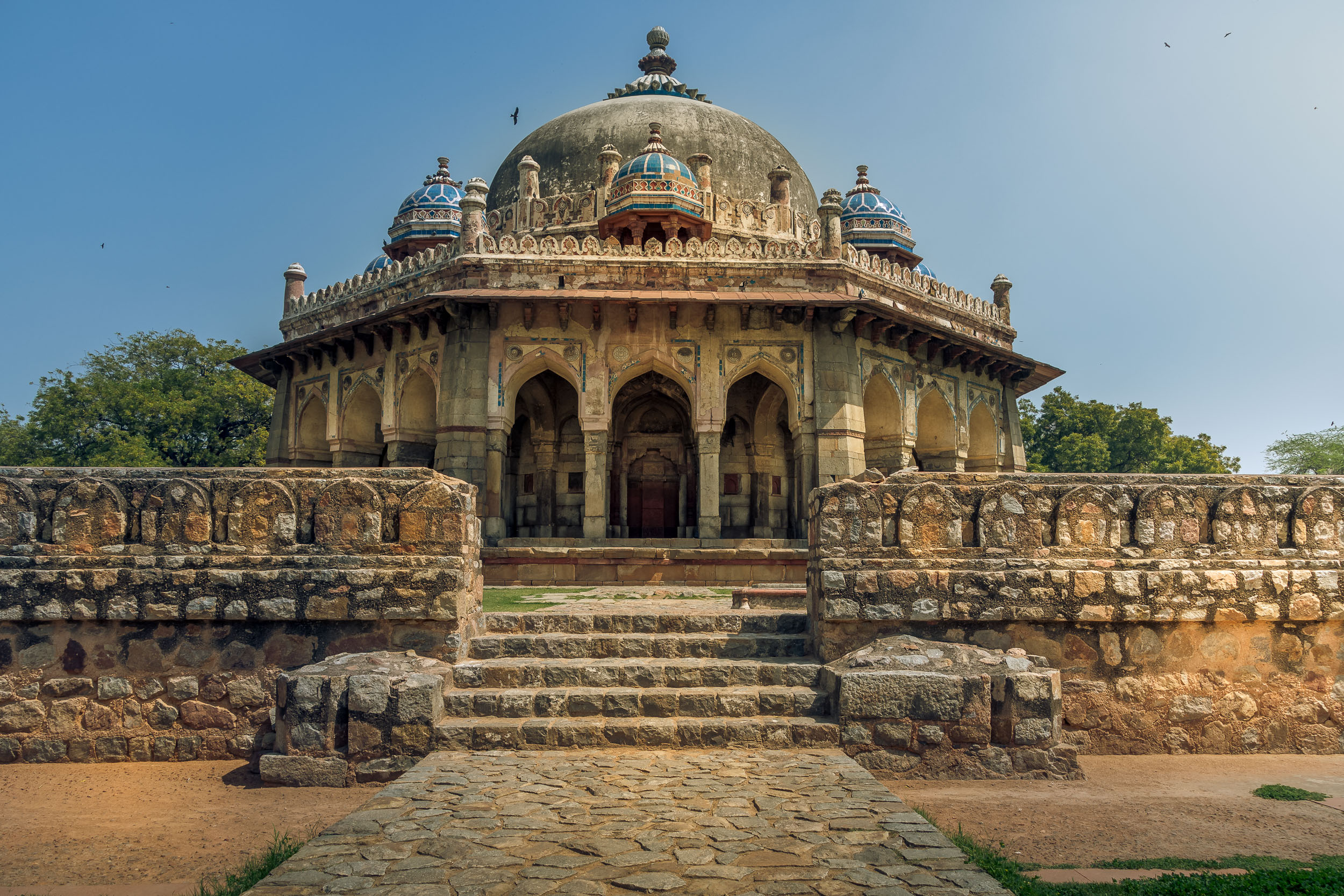Delhi

We started our trip in Delhi.
Due to delays on the outward flight, largely caused by the diversion of planes to avoid flying over Pakistan, we arrived at our hotel mid-way through the afternoon to find most of the others in our tour group waiting for our arrival before our first trip out. We therefore did not get to our room before heading off to Gandhi Smriti (also known as Brila House) where Gandhi spent the last months of his life following Indian independence and where he was assassinated on his way to prayer in the evening of 30 January 1948. We visited the rooms in which Gandhi spent his last days, in the building that now includes a museum with some of his meagre possessions, and then followed the route along which Gandhi walked to pray and to the point where he was assassinated. There is now a memorial at the place where he was killed. From the exhibits, it appears that Gandhi was expecting his imminent death in the days leading up to his assassination.
The following day, we completed the journey that Gandhi made, visiting the site where he was cremated, the Rāj Ghāt, where there is a monument.
Both Gandhi Smriti and Rāj Ghāt are in New Delhi, together with the Rashtrapati Bhavan, the residence of the president, and the India Gate, both of which are examples of the many buildings in New Delhi designed by the British architect Sir Edwin Lutyens (who also designed the Cenotaph in London). Lutyens designed and built much of New Delhi along with another British architect, Sir Herbert Baker.
Whilst in Delhi, we also visited Old Delhi. It was striking how sudden the change was from New Delhi to Old Delhi, changing as we crossed into Old Delhi from a relatively modern city to one that time seemed to have left behind (at least if you ignore the McDonalds that was one of the first places we saw in Old Delhi). The main places that we visited in Old Delhi were Humayun’s Tomb. The tomb was built about 10 years after the Mughal Emperor died on the orders of Humayun’s first wife, and was built close to the Yamuna River – it being important to be close to water. The tomb is built close to the slightly earlier tomb of Isa Khan Niyazi which we saw on the walk to Humayan’s tomb. Isa Khan Niyazi was a noble in the court of Sher Shah Suri, who ruled between the first and second periods of Humayan’s rule. Humayan’s tomb is set in an early example of a “Paradise Garden” which includes four water channels leading to the central building.
The other building that we visited in Old Delhi was the Jama Masjid, one of the largest mosques in India that was build during the reign of Shah Jahan in the middle of the 17th century.




























